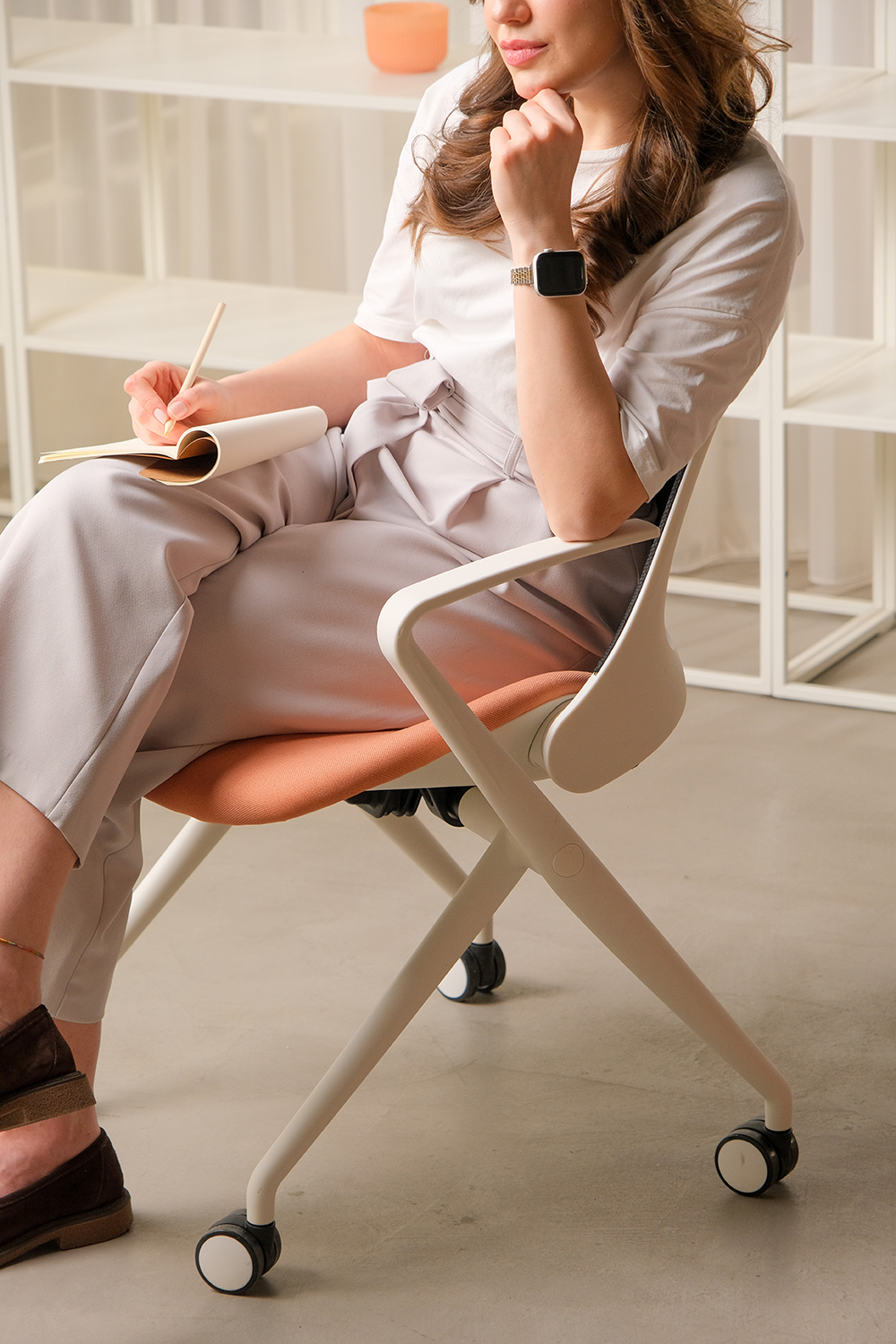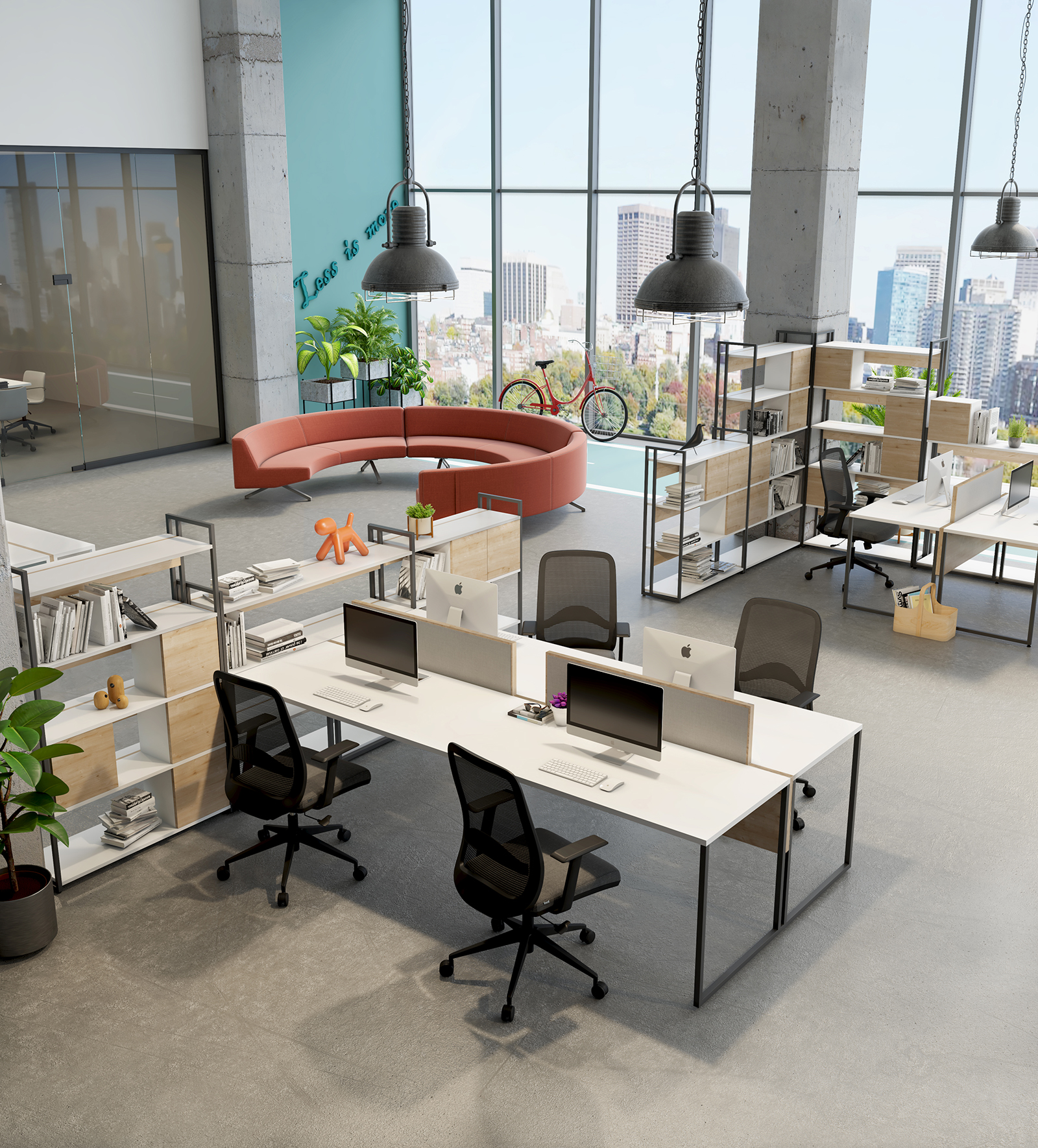Human-Centred Design: Ergonomics 4.0 in Office Furniture
Human-Centred Design:
Ergonomics 4.0 in Office Furniture
At Salone del Mobile 2025, the theme “Thought for Humans” placed people once again at the heart of design. In today’s offices, functionality alone is no longer enough — spaces are expected to support both physical and mental well-being. This shift is redefining our understanding of ergonomics. Ergonomics 4.0 goes beyond preventing posture-related issues; it aims to offer experiences that respect individual differences, nurture emotional balance, and adapt to technological evolution.
From Ergonomics to Ergonomics 4.0: A Conceptual Shift

Traditionally, ergonomics was defined through measurable physical parameters — chair height, desk depth, backrest angle. Yet as working habits evolved, that static approach became insufficient. Ergonomics 4.0 introduces a more holistic, data-informed, and human-centred vision that:
- Adapts to diverse body types, postures, and physiques.
- Considers users’ daily movement, mood, and energy levels.
- Aligns with technology-driven work patterns.
- Aims to reduce mental fatigue while enhancing focus and motivation.
In essence, the goal is not only to protect physical health but to sustain mental well-being — creating environments where balance, comfort, and productivity coexist.
Zivella’s Approach: In Harmony with People and Life
At Zivella, we see ergonomics not merely as an engineering discipline but as a human necessity.
Our product development process begins with essential questions:
“How does this product make the user feel?”
“To what extent does it adapt to the body’s natural movements?”
“Does it leave the user feeling balanced, not exhausted, at the end of the day?”
From office chairs to meeting tables and accessories, every Zivella product is designed to adapt to users’ unique needs. Every detail — from material selection to surface texture — is shaped with both aesthetic and sensory comfort in mind. In this way, workplaces are transformed from purely functional zones into environments of comfort, balance, and experience.
Moreover, we approach office ergonomics not only at the product level but also through spatial design — arranging desk clusters, rest zones, and focus corners in ways that respond to ergonomic and psychological needs.

Technology-Integrated Ergonomics: The Rise of Data-Driven Design
Ergonomics 4.0 also embraces data-driven decision making. Metrics such as sitting duration, preferred desk height, and posture patterns are becoming valuable insights for the next generation of office furniture. At Zivella, we aim to analyse this data to develop solutions that are healthier, smarter, and more effective. Artificial intelligence-supported modelling is another component of this new approach. By using AI, we can create personalised ergonomic profiles based on individual body structures, allowing each user to find their optimal sitting and working configuration.
For project-based offices, this translates into flexible and adaptive furniture solutions tailored to different tasks and habits. User feedback also feeds back into continuous improvement — making ergonomics a dynamic, evolving experience rather than a fixed standard.
In Conclusion
The new era of office design focuses not only on what people do, but on how they feel while doing it. Ergonomics 4.0 moves beyond physical comfort to embrace the sensory, emotional, and individual rhythms of each worker. It forms a bridge between human experience and design — redefining furniture not as a static object, but as an interaction, a support system, and a source of well-being. Because ultimately, a good piece of office furniture doesn’t just help you sit correctly — it helps you feel better, think clearer, and work with balance and purpose.
Latest Articles
-
Human-Centred Design: Ergonomics 4.0 in Office Furniture
-
When Design Meets Fashion: The Role of Aesthetics and Style in Workspaces
-
Thinking Through Textures: Sensory Experience Design in New Office Trends
-
The Power of Modularity: Infinite Combinations, Endless Creativity
-
New Balances Between Craftsmanship and Mass Production
-
Flexibility, Sustainability, and Functionality: The Contribution of Modular Furniture to Design
-
Sustainability and Flexibility Take Center Stage in 2025 Office Design
-
2025 Office Design Trends
-
Shaping the Future with Sustainable Materials
-
The Future of Office Design: A Performance-Based Approach
-
2024 Office Furniture Trends: Innovative and Dynamic Workspaces
-
How to Design an Efficient Office
-
Office Furniture Use in the Tourism Sector
-
Furniture in Co-working Spaces is Simple, Colorful and Modern
-
New Generation Offices for Gen Y and Z
-
Office Furniture Use in the Education Sector
-
We Will Be Back to Office Despite Everything
-
Resimercial Design in Modern Workplaces
-
Ergonomics = Comfort + Ease + Efficiency
-
A Few Tips for Home Offices
-
Offices Meeting the Expectations of Generations Y and Z
-
Shape of Tomorrow
